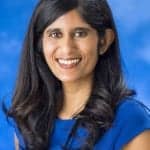A New Jersey private practice employs technologists in a new role. Share your own story with the sleep community.
When Comprehensive Sleep Associates of New Jersey started using sleep technologists as physician extenders in 2015, patients saw no shortening of the private practice’s frustratingly long appointment wait times. Though these daytime techs were downloading PAP data, checking devices, asking patients to share issues, and passing their findings to the physicians, most of the physicians responded by simply duplicating all of the tasks themselves once they got into the patient room.
The physicians ultimately gained confidence in the sleep techs’ new role, but the trust didn’t develop overnight. Several specified to techs exactly what to cover with patients. Forms and checklists were developed, then no longer needed as everyone came onto the same page. Eventually, physicians started coming to the control area of the affiliated sleep lab (the Center for Sleep Medicine at Capital Health) to ask for sleep tech assistance, when no tech was readily available to help out in the private practice—an indication that the physician extenders had become essential. “Over time the practitioners gain confidence in the technologists in this role and support their role—to the point of being very unhappy when a technologist is not available to assist them,” Rita Brooks, MEd, RPSGT, REEG/EPT, director of diagnostic services at Capital Health, told me via email.
The appointment wait times were now shorter, patients who needed in-lab studies were referred more quickly, and PAP therapy compliance was improving. “By this time the technologists were also monitoring download data and calling patients newly set up on PAP therapy in an attempt to catch any problems early,” Brooks said.
Fifteen sleep techs are now shared between the practice—which has 4 physicians and 1 nurse practitioner (NP)—and the sleep center—which has 6 staff physicians and shares the NP. “We have 4 very experienced RPSGT technologists on day shift; 2 have also recently achieved the CCSH credential. At least 1 technologist is typically scheduled to work with the practice, and 2 to 3 additional technologists are in the sleep center. One of the sleep center technologists floats to the practice as needed to assure sufficient coverage,” Brooks explained.

Sree Roy
[email protected]
The CCSH (Certification in Clinical Sleep Health), available from the Board of Registered Polysomnographic Technologists, has helped train several of the sleep techs (and even the nurse practitioner) for the patient interactions. The curriculum “is focused on clinical skills, as opposed to technology skills that are valued in technologists who are diagnosing and treating patients using polysomnography and PAP or other therapies,” said Brooks, who is also president of the American Association of Sleep Technologists (AAST).
Reimbursement struggles, however, remain. Unlike a diabetes educator, CMS doesn’t allow for a CCSH (or RPSGT) to bill independently for professional services. So the AAST assembled a task force “to assist with gathering (and/or developing) research, position papers, patient support, and other information necessary to petition CMS for reimbursement for these services,” Brooks said. “Unfortunately, as with anything related to governmental regulations, this will not be a quick or easy venture.”
In the meantime, Brooks’ advice is for other techs who are breaking ground to share their success stories. “Those with successful roles in physician practices as well as other new roles in sleep medicine should be telling us their stories and advocating for an expanded role for technologists looking to grow in their profession,” Brooks said. Sleep Review would also love to hear your voices.
Sree Roy is editor of Sleep Review.
Photo: These sleep techs are breaking new ground as daytime physician extenders. From left to right: Susan Kochis, REEGT, RPSGT; Robert Stevenson, RPSGT; Penni Smith, RPSGT, CCSH; Kiara Jablonski, RPSGT, CCSH.

![Sleep Techs as Physician Extenders [Editor’s Message]](https://sleepreviewmag.com/wp-content/uploads/2018/12/SleepTechPhysicianExtenders.jpg)



I Am Type 2 Diabetes And High Cholesterol And High Blood Pressure And Upper Reflux And Irregular Heart Beat And And Heart Rhythm And Sleep Apnea
Your tech kera was just great. She was friendly and seems to be so knowable, she answered all my questions and concerns.